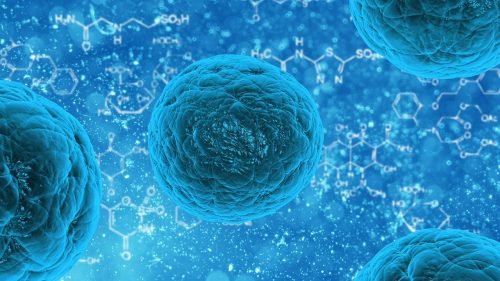Protein clumps that characterize degenerative diseases of the brain such as Alzheimer's have been considered irreversible until now. In a new study, researchers from Tel Aviv University have identified a protein (Std1) that undergoes reversible aggregation, meaning that the clumps disappear when the conditions change + the finding can be used in the future to treat a number of diseases such as diabetes, Alzheimer's and Parkinson's

"It's easy to turn an egg into an omelette, but you can't turn an omelette into an egg," says the old saying. When you cook an egg, the whites change their shape irreversibly. But researchers from Tel Aviv University have identified a biological mechanism that may make it possible to turn an omelette back into an egg - and to treat a series of diseases that arise as a result of the accumulation of proteins in cells.
The groundbreaking research was conducted in the laboratory of Prof. Martin Kopik from the School of Molecular Biology and Biotechnology at Tel Aviv University. The results of the study were published late last week in the journal Molecular cells.
"With age, clumps of proteins, or aggregates, form in the cells," explains Dr. Kobi Simpson-Lavie who conducted the research in Prof. Kopik's laboratory. "These lumps are formed for many reasons, and it is considered an irreversible condition. The phenomenon is typical for a number of serious diseases, and especially for diseases characterized by a loss of brain function."
In general, most of the processes inside our cells are carried out by proteins. Usually, these are soluble molecules that are able to move from place to place in the cell. Clumps of proteins disrupt this ability and are responsible for a number of diseases, such as diabetes, Alzheimer's, Parkinson's and encephalopathy ("mad cow"). The cells try to break up the clumps, or stack them in certain places in the cell to minimize the disturbance.
In the new study, Dr. Simpson-Lavie examined the reaction of yeast cells to the presence of sugars, and found that adding the sugar glucose to the growth medium causes the accumulation of a protein called Std1.
"We wondered if the Std1 blocks had a physiological role," says Prof. Kopik. "That's why we monitored the cells and saw that when the sugar levels in the cell dropped, the lumps disappeared and the Std1 protein returned to its natural location in the nucleus, where the cell's genome is located. Since Std1 plays a central role in response to the presence of various sugars in the growth medium, we hypothesize that its reversible aggregation is a control mechanism, allowing cells to rapidly respond to changing levels of sugar in the growth environment.
The formation of the clumps in the Std1 protein depends on the same cellular systems that lead to neurodegenerative diseases of the brain. In doing so, the researchers revealed a new biological mechanism for regulating gene activity following changes in environmental conditions, by way of reversible aggregation. This study raises the possibility that not all protein aggregation causes disease, and that it is possible to turn irreversible aggregation into reversible.
"These results encourage us to continue investigating the mechanism, with the aim of better understanding the pathways for breaking down protein clumps," says Prof. Kopeik, "research that may enable the development of future treatments for neurodegenerative and other diseases."
